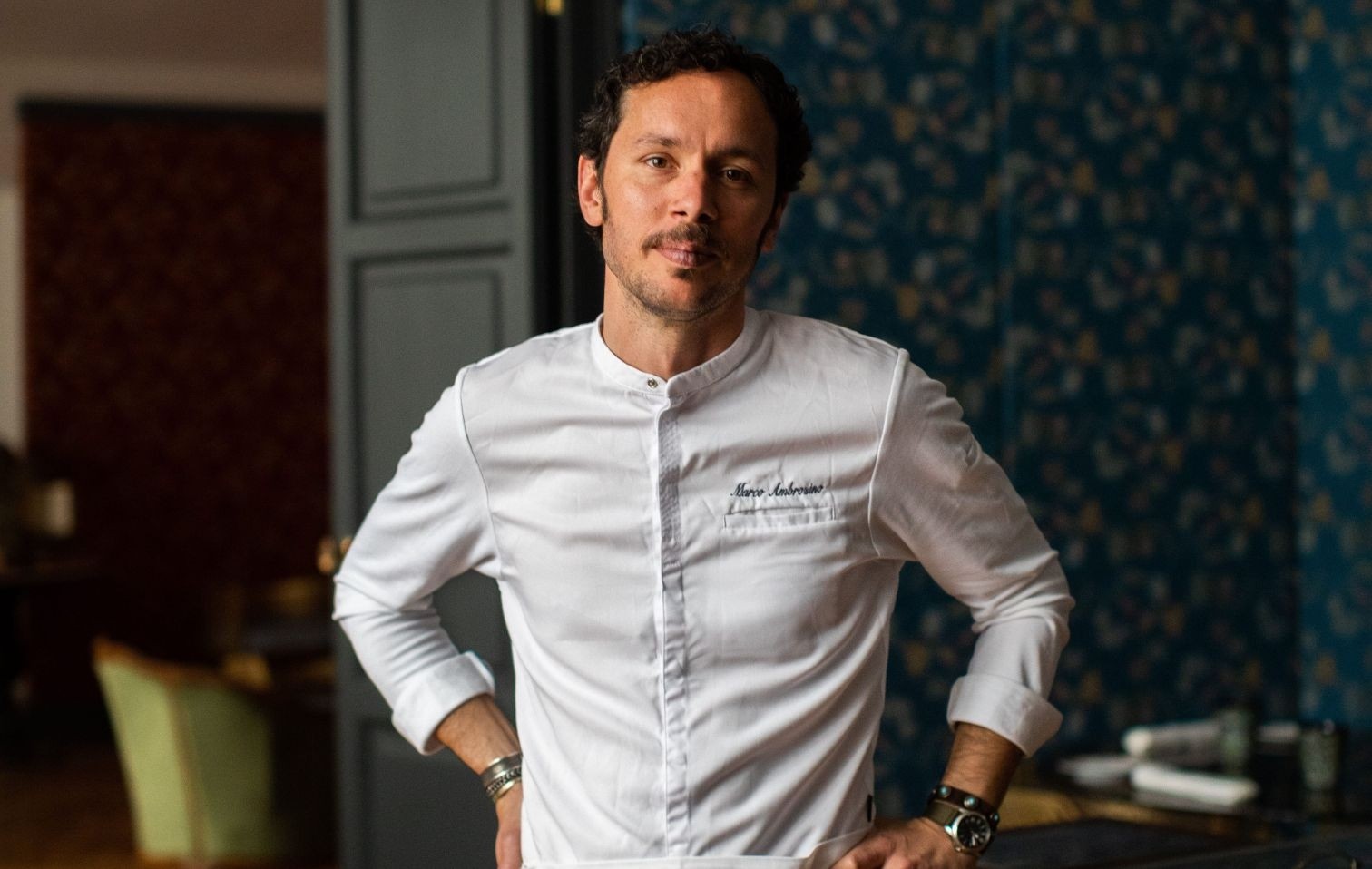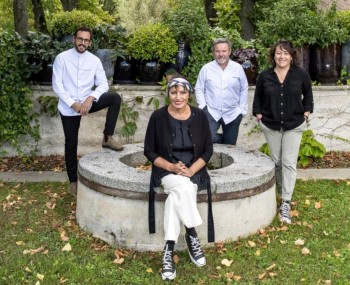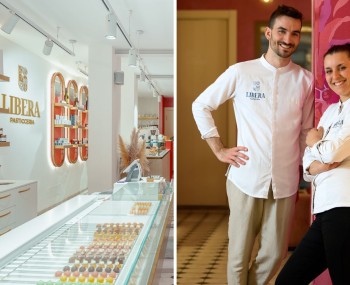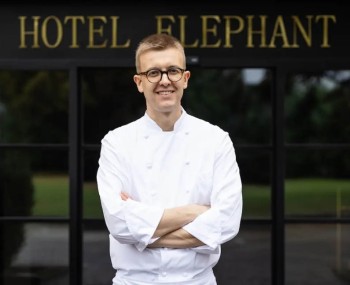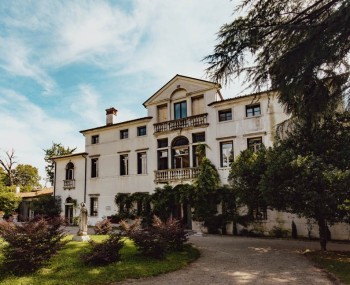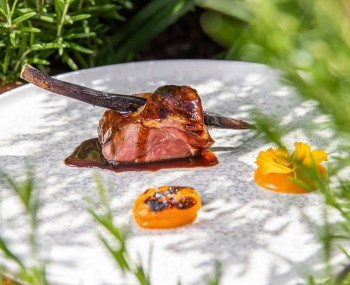The Procidan chef in less than two years since the project began has created a solid and mature sign for a culinary journey that goes beyond food, reflecting in the value of experience and the study of peoples.
Photos by Letizia Cigliutti and Mary Ianniciello
The chef
When you leave the iconic 19th-century-style room that houses the Sustànza restaurant inside ScottoJonno, a gastronomic palace inside the renovated Galleria Principe di Napoli, you have the more than clear idea that you have witnessed a one-of-a-kind experience. The fine dining sign of the building brought back to life by entrepreneur Luca Iannuzzi has the good fortune - in addition to that of having works of art, antiques and Art Deco-style furnishings inside for a restyling that bears the signature of artist Eugenio Tibaldi - of being led by Marco Ambrosino, a Neapolitan chef at the height of his culinary maturity.
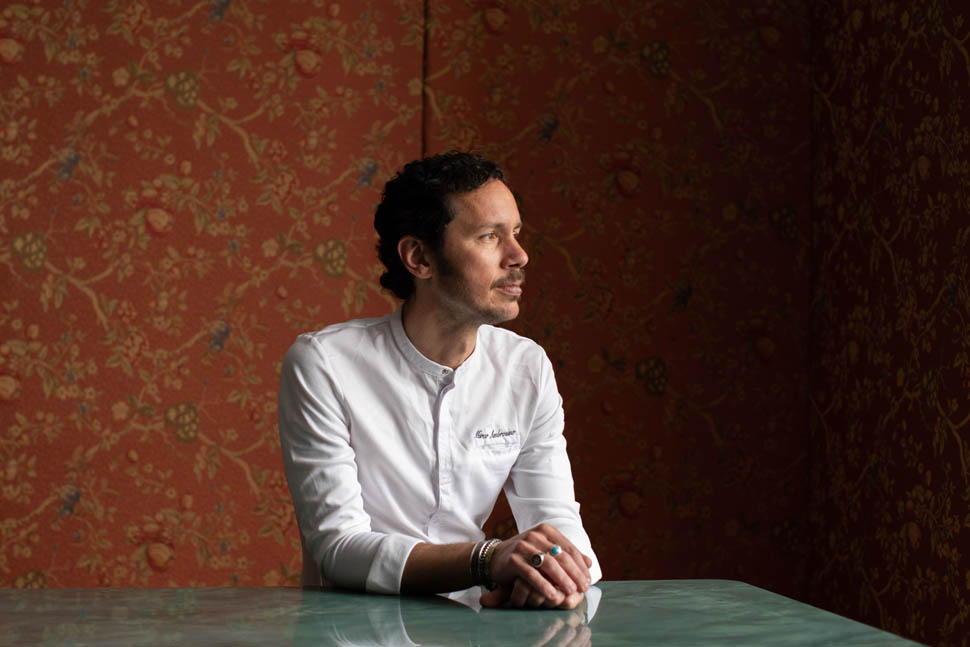

A maturity that goes beyond technique and knowledge of ingredients, because the Procida-born chef is a scholar and a creative, a lover of human anthropology and curious to go and investigate those peoples who for centuries have inhabited the Mediterranean, the geographic basin that is the protagonist of his cuisine. The different cultures of this region, which have influenced the Italian peninsula, are the common thread in the dishes of Marco Ambrosino, who after his 10 years in Milan spent at 28 posti, has returned close to his homeland eager to bring something new to Naples and thus challenge tradition, a “sacred” and indissoluble term in every neighborhood of the city.
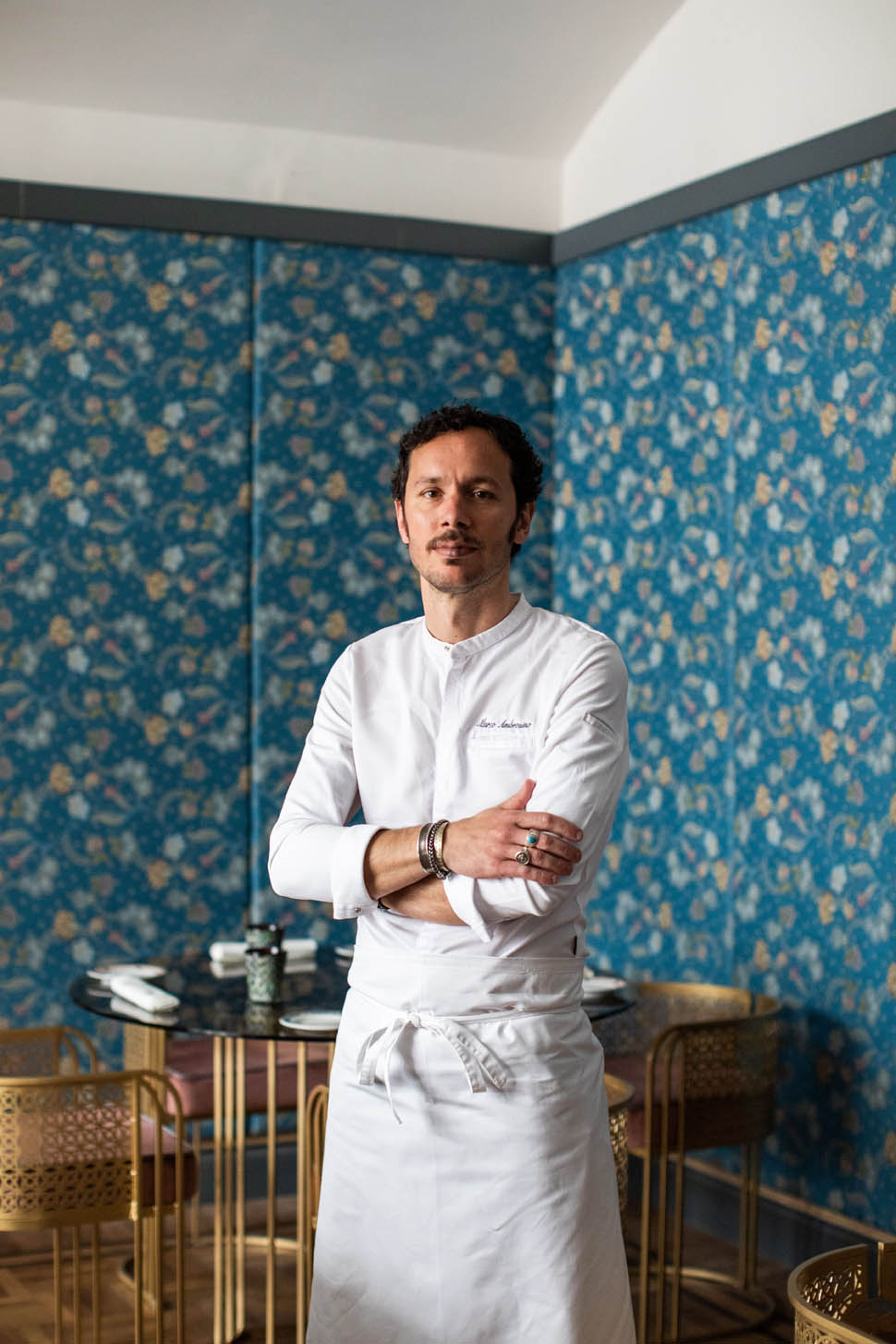

“In the Neapolitan restaurant industry there is this huge encumbrance that I call pseudo-tradition ,” the chef says, “ although it is not easy to find an address in the city where you can eat the recipes that have made the city's gastronomic history really well. It is a challenge that the chef has faced with dedication since opening Sustànza in 2023 and one that he does not regret today: "Naples is not an easy city, but compared to my beginnings in the kitchen I find it much more open to change. Despite this, it is difficult to make my ideas understood by the Neapolitan public, in fact most of the customers are either foreign or come from outside the region,” Ambrosino comments.

Scottojonno
If the most exclusive experience is fulfilled on the second floor of ScottoJonno, the ground floor hosts the more informal proposal of the bistrot to be paired with the drinks that characterize the offerings ofArchivio Storico, a cocktail bar where mixology is conceived by Mirko Lamagna, who transforms the most famous tales of Naples into liquid recipes, alcoholic or not, to be enjoyed in the indoor rooms or outside, under the shelter of the vault of the Galleria Principe di Napoli. A place that takes guests back to the Belle Époque of the 1800s, when these spaces were once owned by Vincenzo ScottoJonno - to whom current owner Luca Iannuzzi dedicated the name of the project -, also a Procidan like Ambrosino, who welcomed literati and artists in this pleasant place.
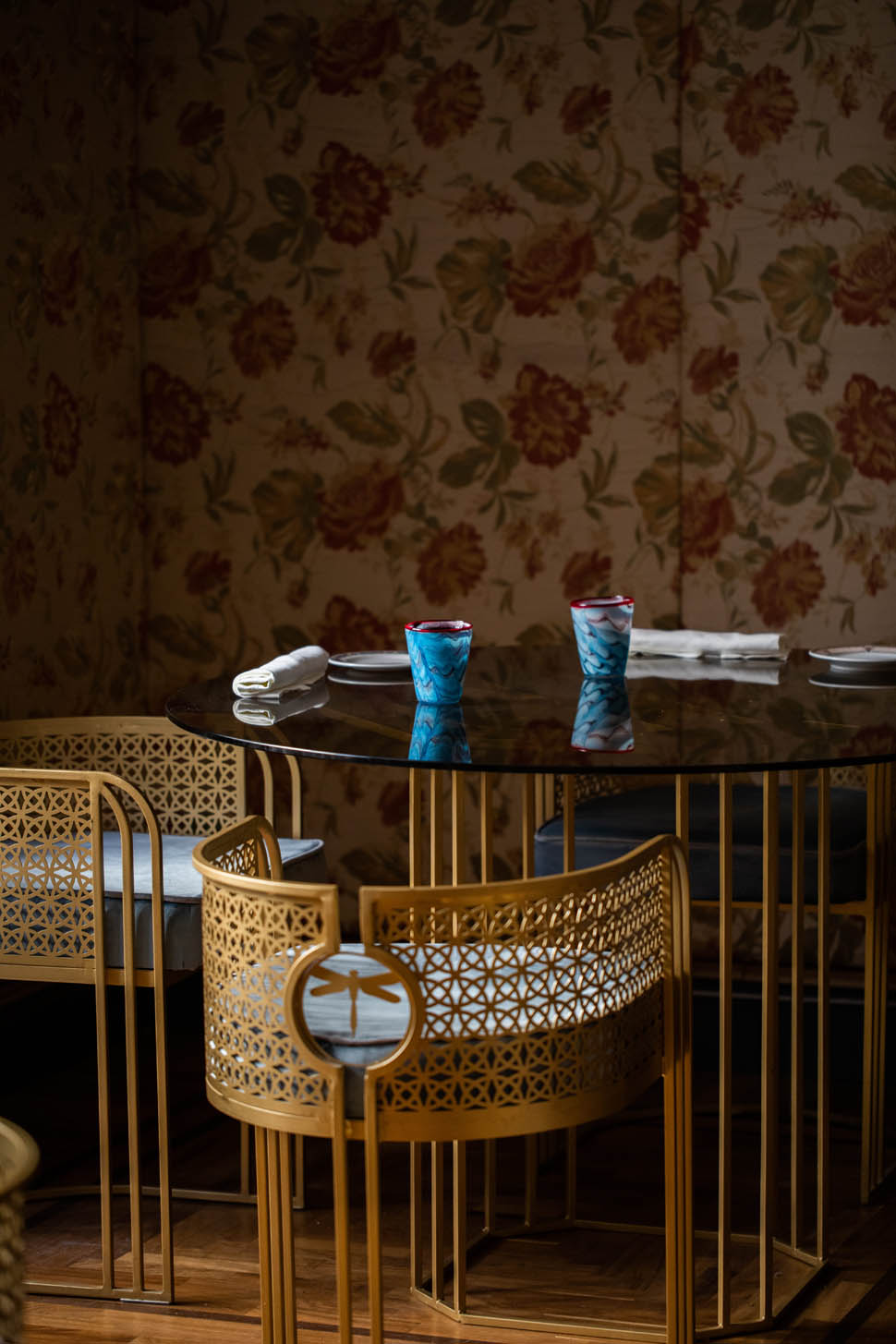
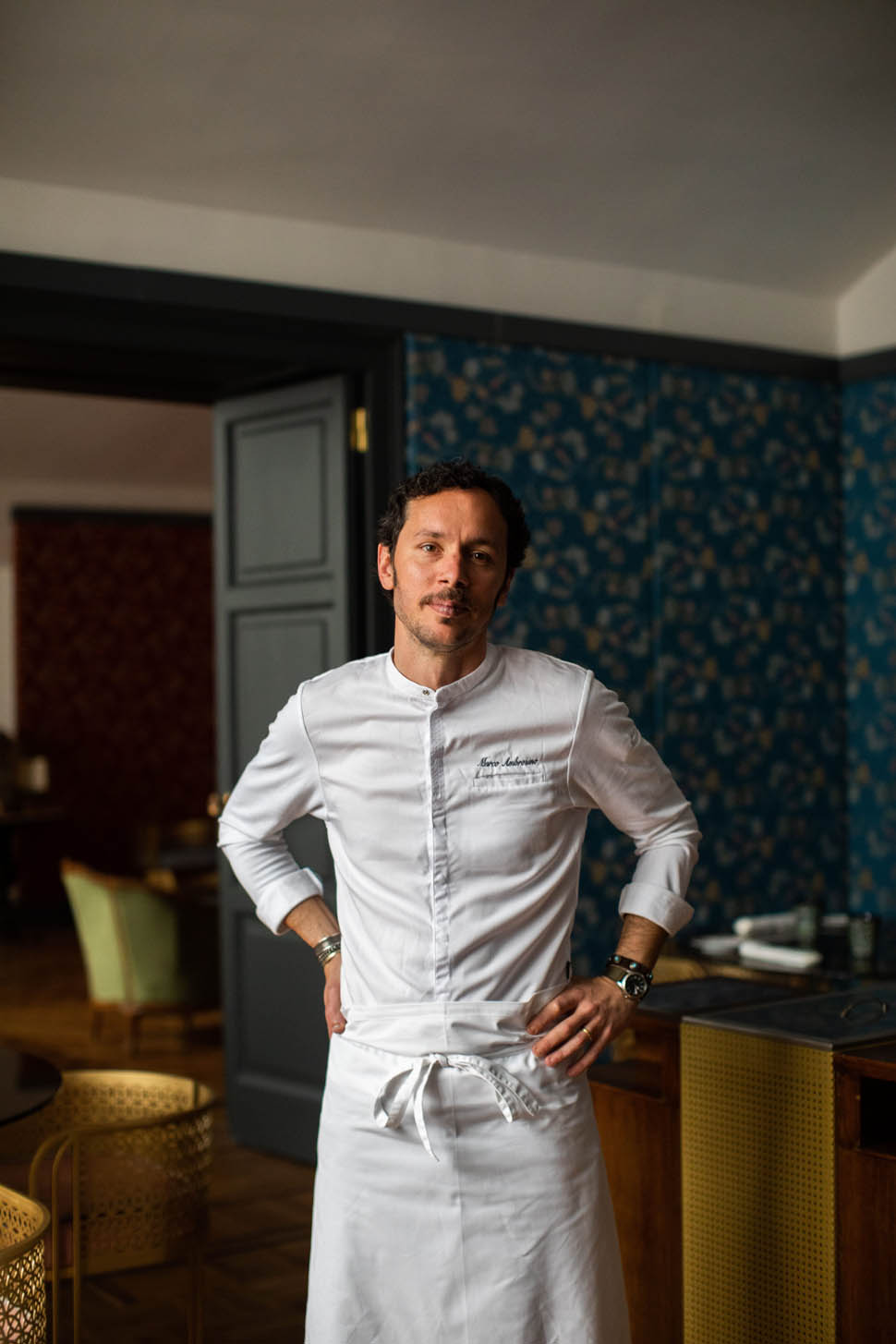
A past that lives again today thanks to the food and wine offerings of both Sustànza and the bistro: an address that, in addition to the very talented Marco Ambrosino, can also count on Federico Andreini, a young pastry chef born in 1996 who shares with the cook a passion for history and for those Mediterranean peoples who have positively imbued our culture.

The Dishes
Before sitting down to eat, one sits in a small sitting room where the palate is warmed by a homemade tonic imbued with Mediterranean spices and a clove infusion, accompanied by a white melon cube infused with rice vinegar with lime, pepper and caper leaf and a Waffle with flour and chickpea hummus. The intention is clear: to get used to the acidic thrusts of the dishes that are one of Marco Ambrosino's stylistic hallmarks. After the pleasantries are over, the tasting continues in one of his rooms where large round tables fill the spaces. The amuse-bouche is a Vegetable Flan with miso, olives, Misticanza and Sicilian oil, with the waiters urging the scarpetta with the homemade danubio-whose fragrance brings children back-while the Macaron butter and anchovies leaves excellent taste sensations.
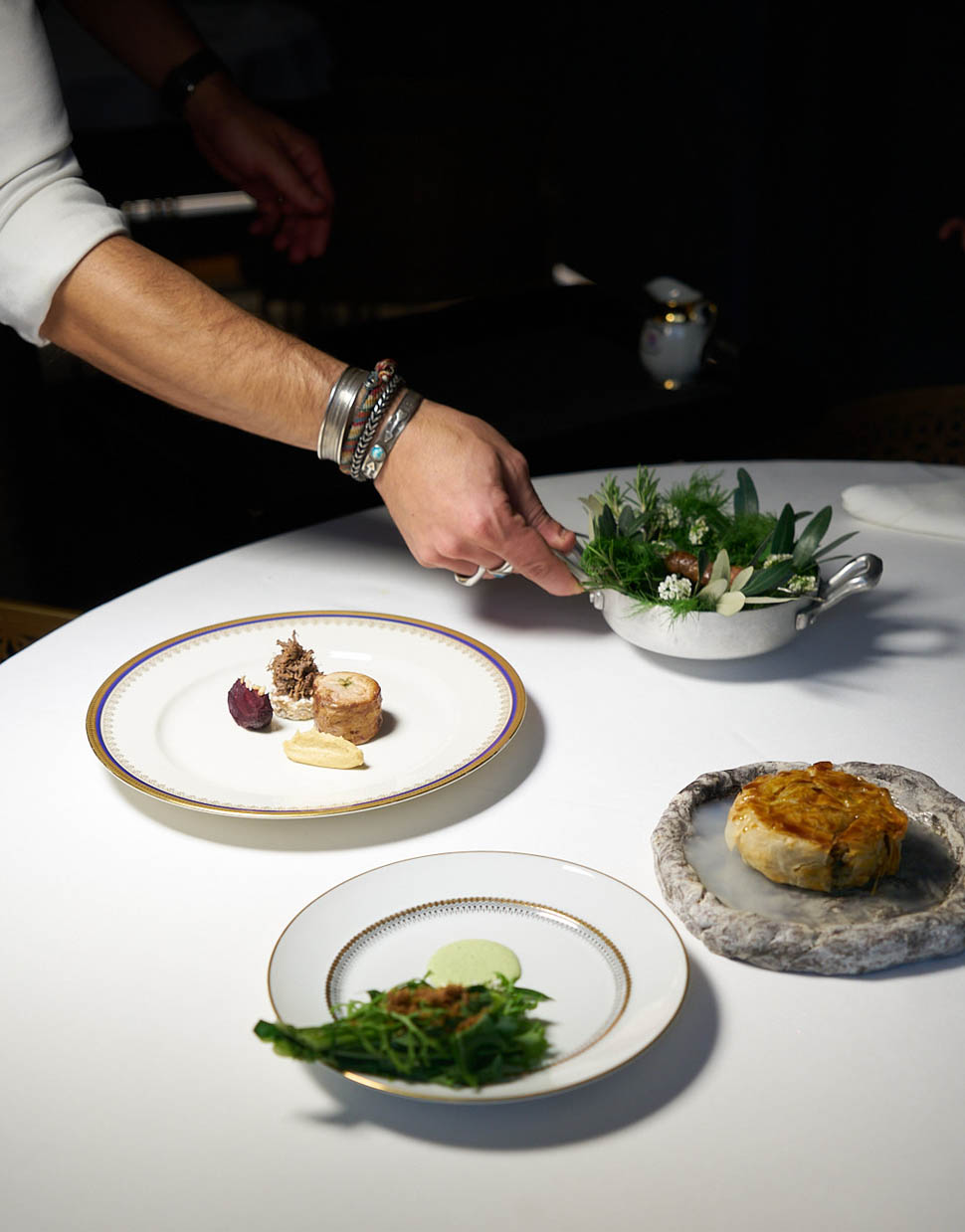
The first appetizer is a Consommé with preserved and fermented seasonal vegetables. A dish that already tells a lot about Sustànza's philosophy because it is a broth renewed daily with fresh vegetables, as its preparation dates back to the opening of the restaurant. A “solera method” applied to the vegetable, for a remarkable result. The Grilled Artichoke, black truffle, olives, cucunci, farmer's bitter and nutmeg is a course made up of many different moments and flavors, with a perpetual acidic thrust that is intentional and sought after. The curiosity? The truffle is not flaky but “sacrificed” in the broth to ennoble the dish.
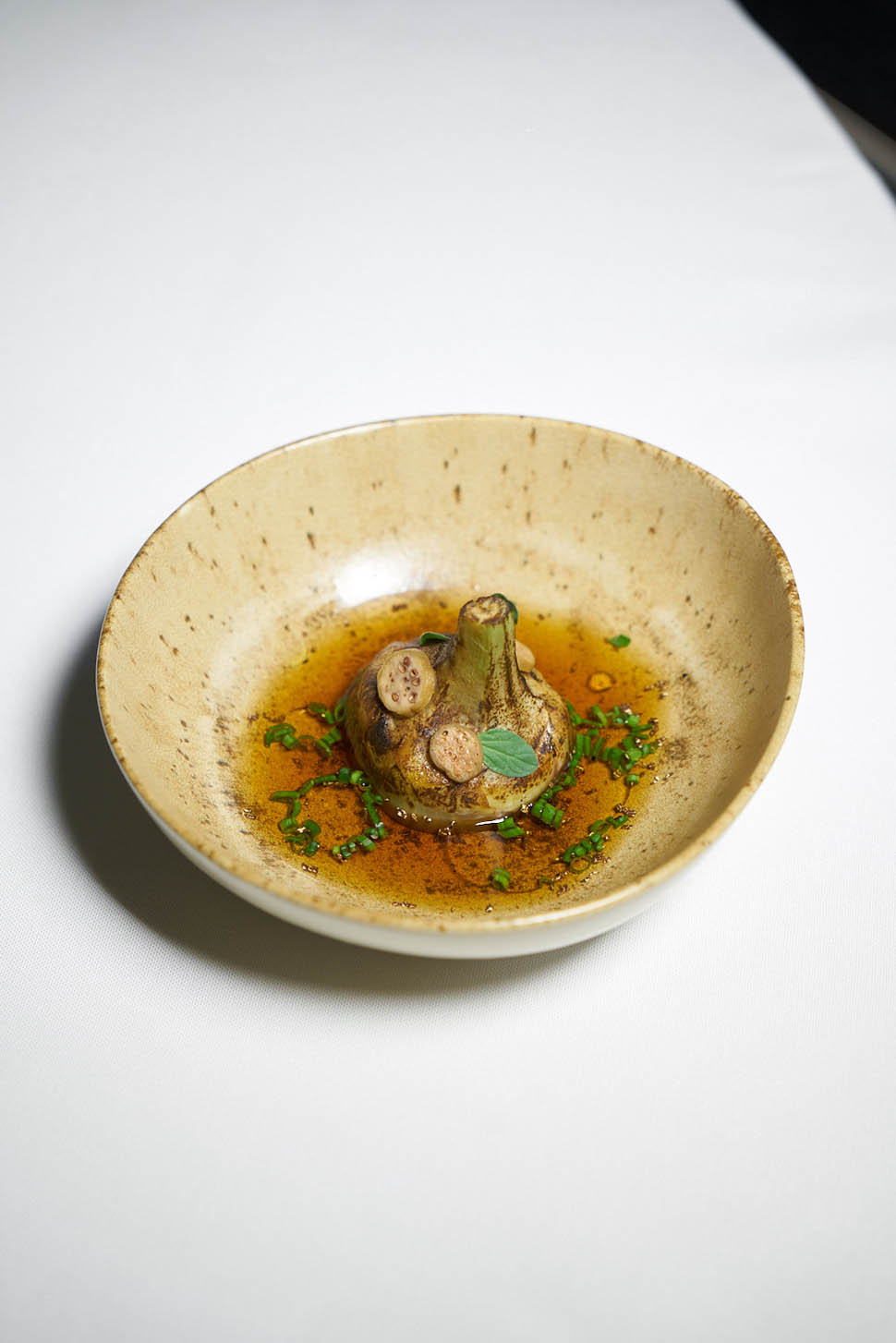
It is always the embers that characterize the Oyster glazed with fermented rose fennel and topped with shallots, oyster mayonnaise, sea fennel, fermented bread wine and lentisk oil. Original and conceptual, this creation is another statement of Ambrosino's intent: at Sustànza's there is nothing ready put on the table, the manipulation of ingredients is a mantra.
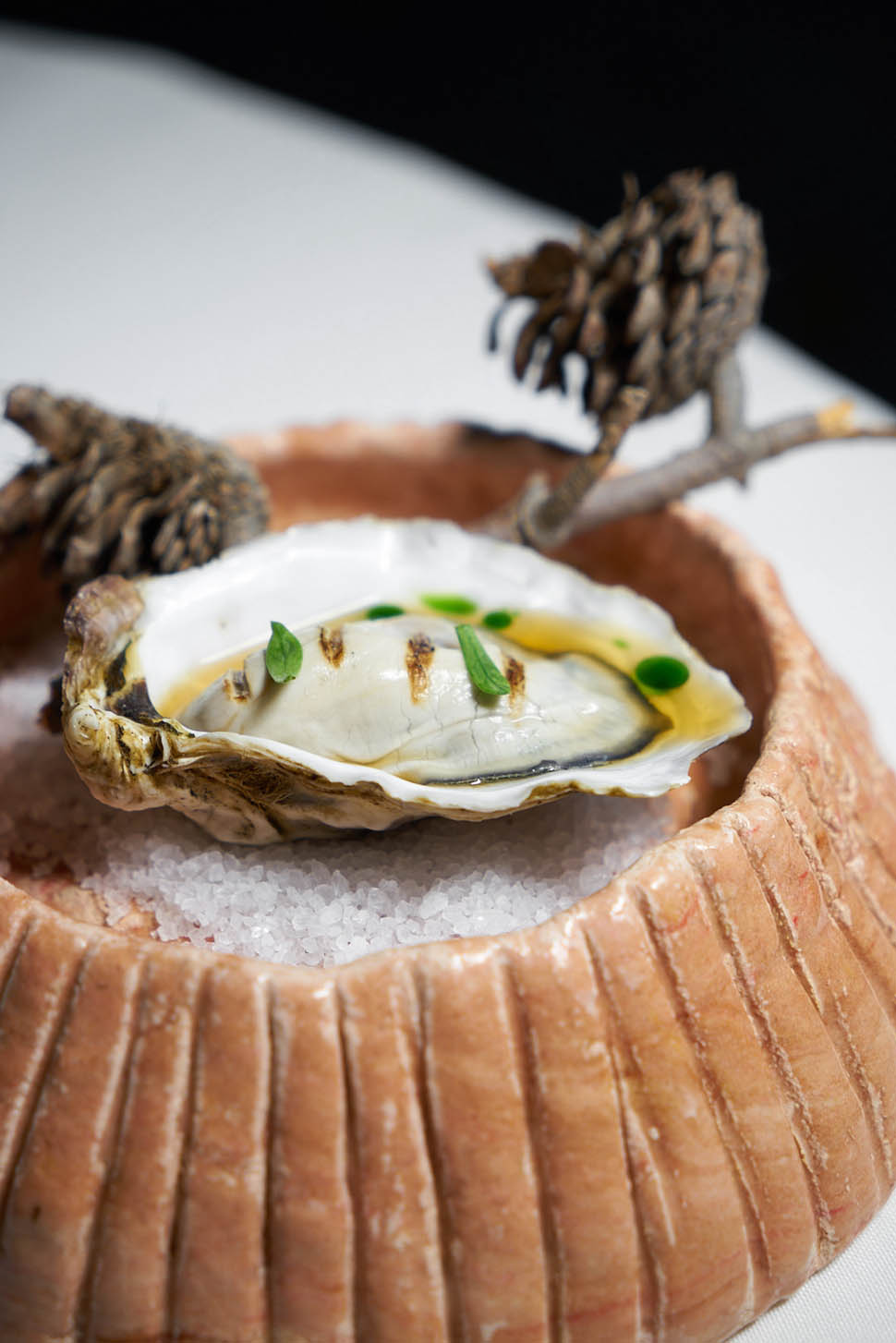
The last of the appetizers makes the heart flutter: Chiaiozza, one of the chef's signature dishes, is a crudo of dogfish topped with a grilled kale salad, maritime pine oil, squid ink and sea urchin ice cream. A tribute to Procida's famous inlet, it has an intense, mouthwatering flavor, its iodine scents reminiscent of a stroll by the sea. It is steeped in history the Minestra di pasta and macerated bread, cypress, marinated mackerel, almond moretum, argan oil and pasta vinegar. Moretum is in fact a preparation invented by the Romans to preserve food-a practice often used by sailors on ships-that is freshly prepared and mixed together with mixed pasta cooked on the nail. An essential preparation, where table talk is an integral part of the experience.
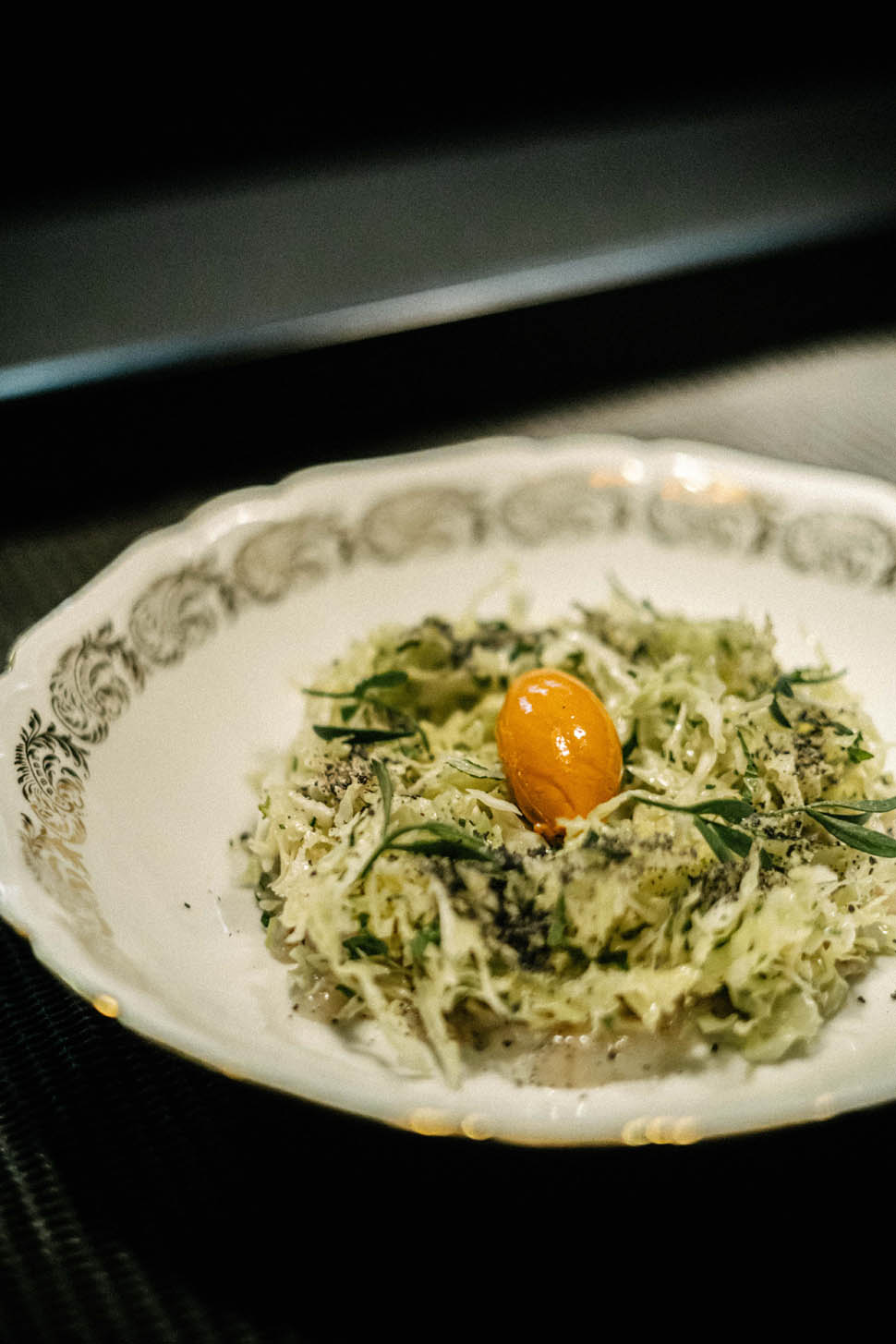
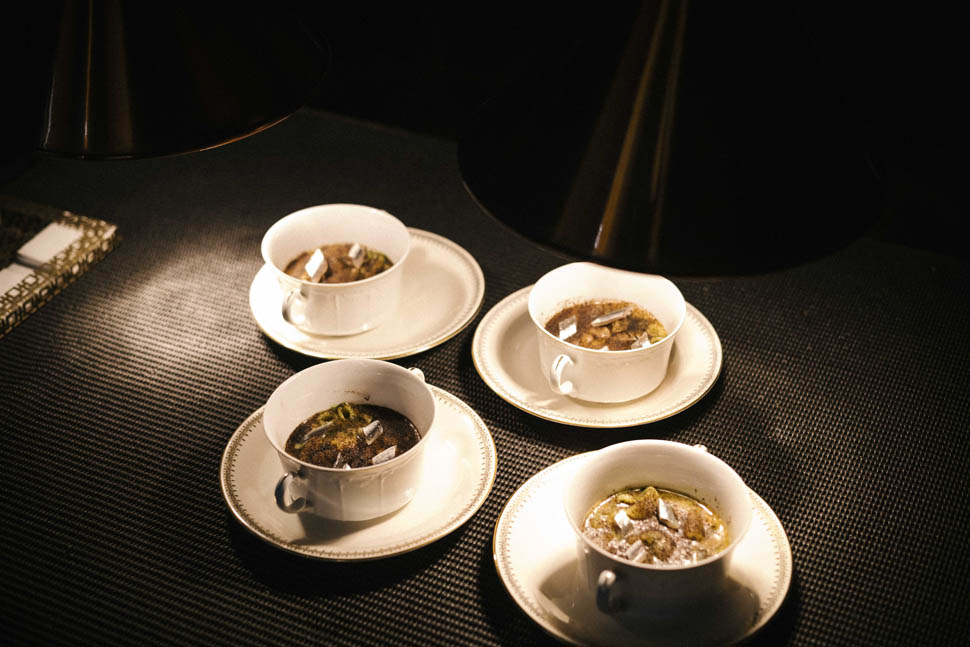
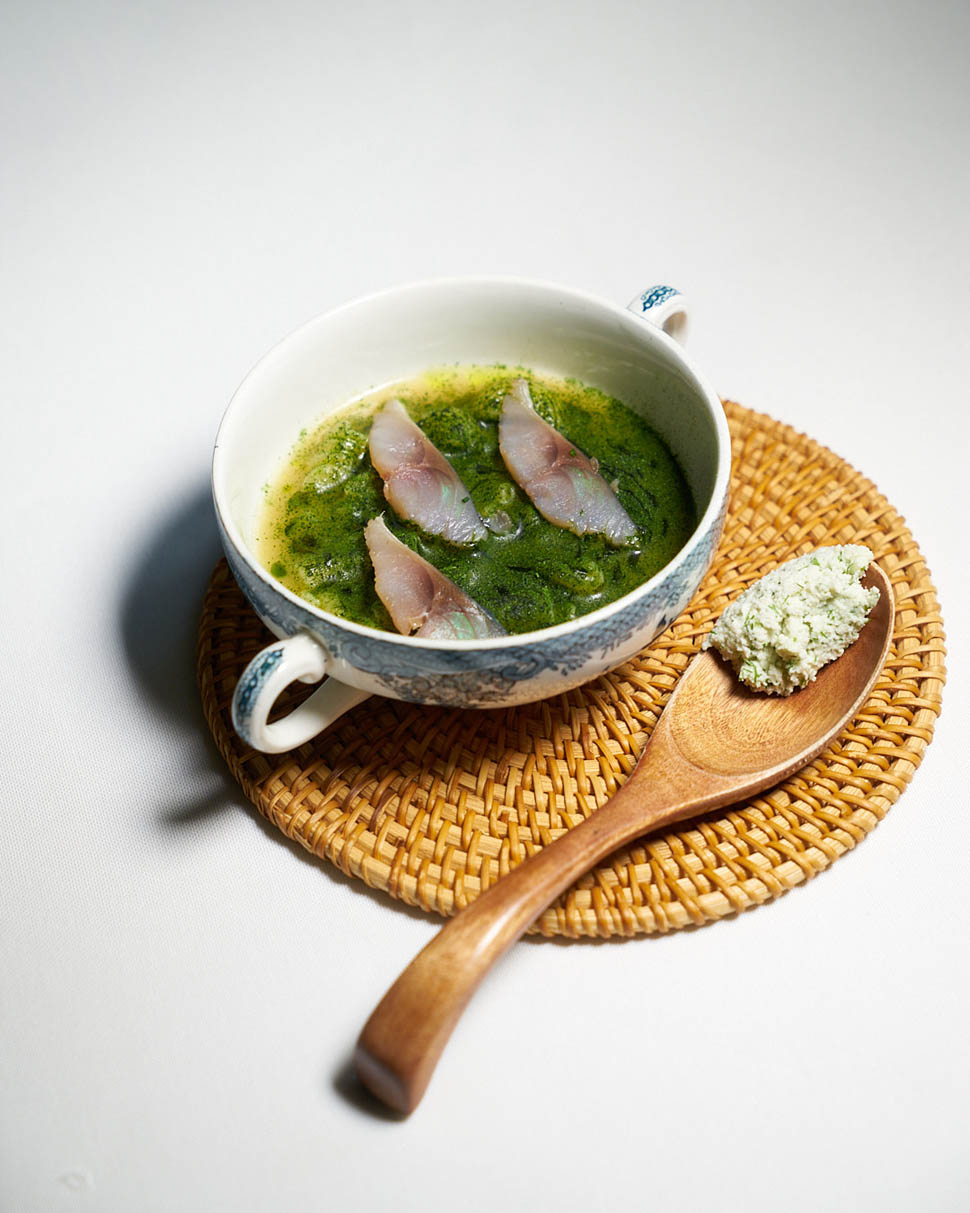
Pecorino and lamb are the protagonists of the second course, Transumanza, two ingredients that tell the story of the way of eating of different peoples, from Spain to the Middle East, a place where conviviality is another fundamental aspect of being at the table. It starts with Lamb Shoulder with bottom of sheep stew and chickpea and turnip quenelles and then moves on to Burek stuffed with lamb and sheep and glazed with pomegranate juice reduction. In between an Aromatic Bouquet enriched with a powder of marinated and dried raw sheep meat; to close the different tastings the Crépinette with lamb entrails and kimchi of torzella. A culinary journey steeped in stories of different countries, to be enjoyed step by step.
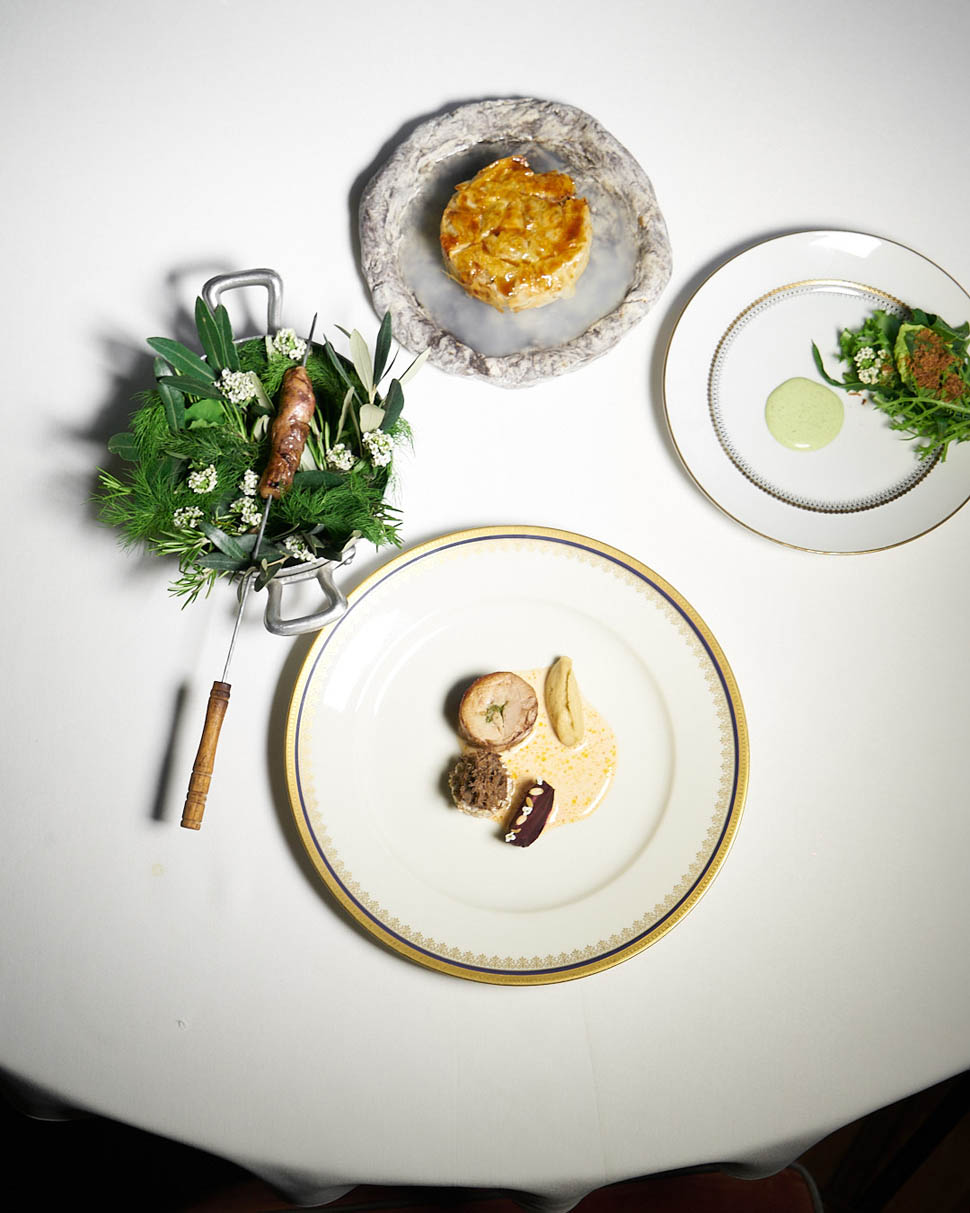
The dialogue with the Mediterranean continues with Federico Andreini's surprising desserts. Among them is Mare Clausum, which explores the political concept of this phenomenon. “In the 1600s, there were long periods when navigation was banned, and ships were stranded in distant ports,” the confectioner tells us. ”Thus, the foodstuffs transported by boats began to come off the ships and mix with those of the coastal cities, generating contamination and profound cultural transformations.” And it is a Marzipan Raviolo that encapsulates the essence of this thought, composed of green almonds and stuffed with Coastal herbs, glazed with baharat (Moroccan sauce) and bathed in seaweed broth, maritime pine oil and Amaro Mediterranea granita, a cold extraction of lemons and spices.

Contact
Sustànza
Galleria Principe di Napoli, 13, 80135 Naples
Phone: 0813795766
